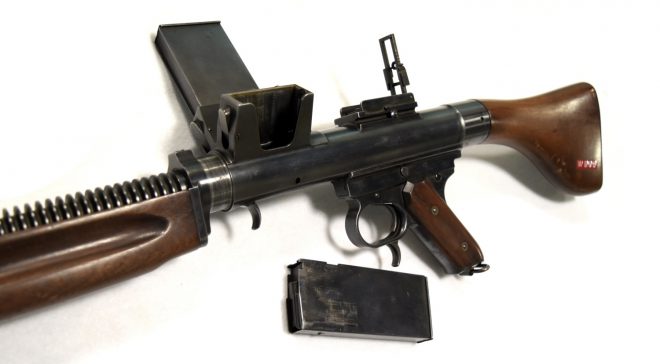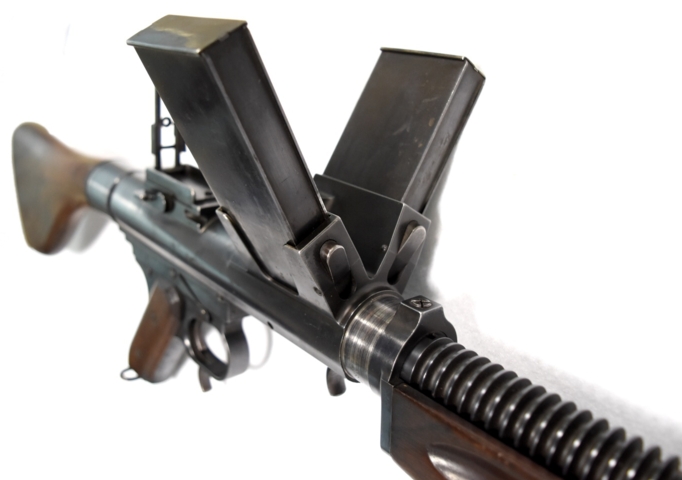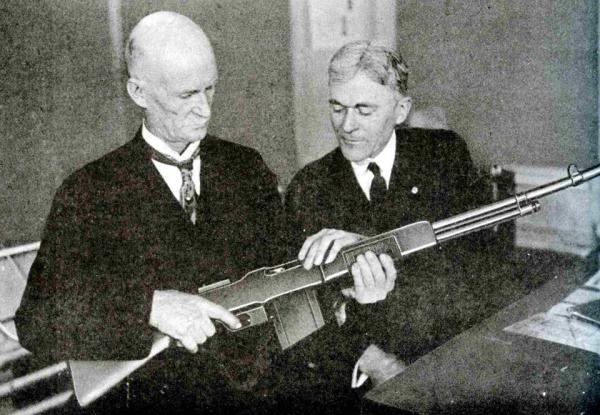This was an internal project by Winchester during the 1st World War period. It is basically a rimless version of the 351 WSL cartridge. It was designed for aircraft use, but there was also an alternate barrel with bayonet attachment for ground use. The rifle was the Winchester-Burton Machine Rifle, also known as the Winchester Model 1917 and was developed by Frank F. Burton. Little documentation on the rifle survives, but it was believed to have been intended for use as an anti-balloon weapon. Observation balloons dominated the Western Front and were instrumental in directing artillery fire and spotting enemy troop movements. These hydrogen-filled static balloons became a key target for airmen on both sides. As such, they were often heavily defended by anti-aircraft guns and even fighter cover. They were initially attacked with conventional ammunition which proved ineffective. In 1916, a French officer Yves le Prieur designed an electrically triggered rocket system which could be mounted on a fighter plane’s wings. The limited range of these rockets meant a better solution was still needed. By 1917 tracer and incendiary ammunition was being developed; the first to be deployed was the British ‘Buckingham’ ammunition which used phosphorus. This was originally developed in response to the German zeppelins which bombed Britain during the early years of the war. Burton’s automatic rifle was chambered in the .345 Winchester Self-Loading Rifle cartridge – a rimless, modified version of Winchester’s .351 WSL cartridge which had an incendiary spitser projectile.





 The bottom specimen is a replica by OPM in South Africa made for cartridge collectors.
The bottom specimen is a replica by OPM in South Africa made for cartridge collectors.
There is a very good VIDEO describing the working of the Winchester-Burton Rifle


Pictures from The Firearm Blog
 Frank F. Burton with John M. Browning
Frank F. Burton with John M. Browning
